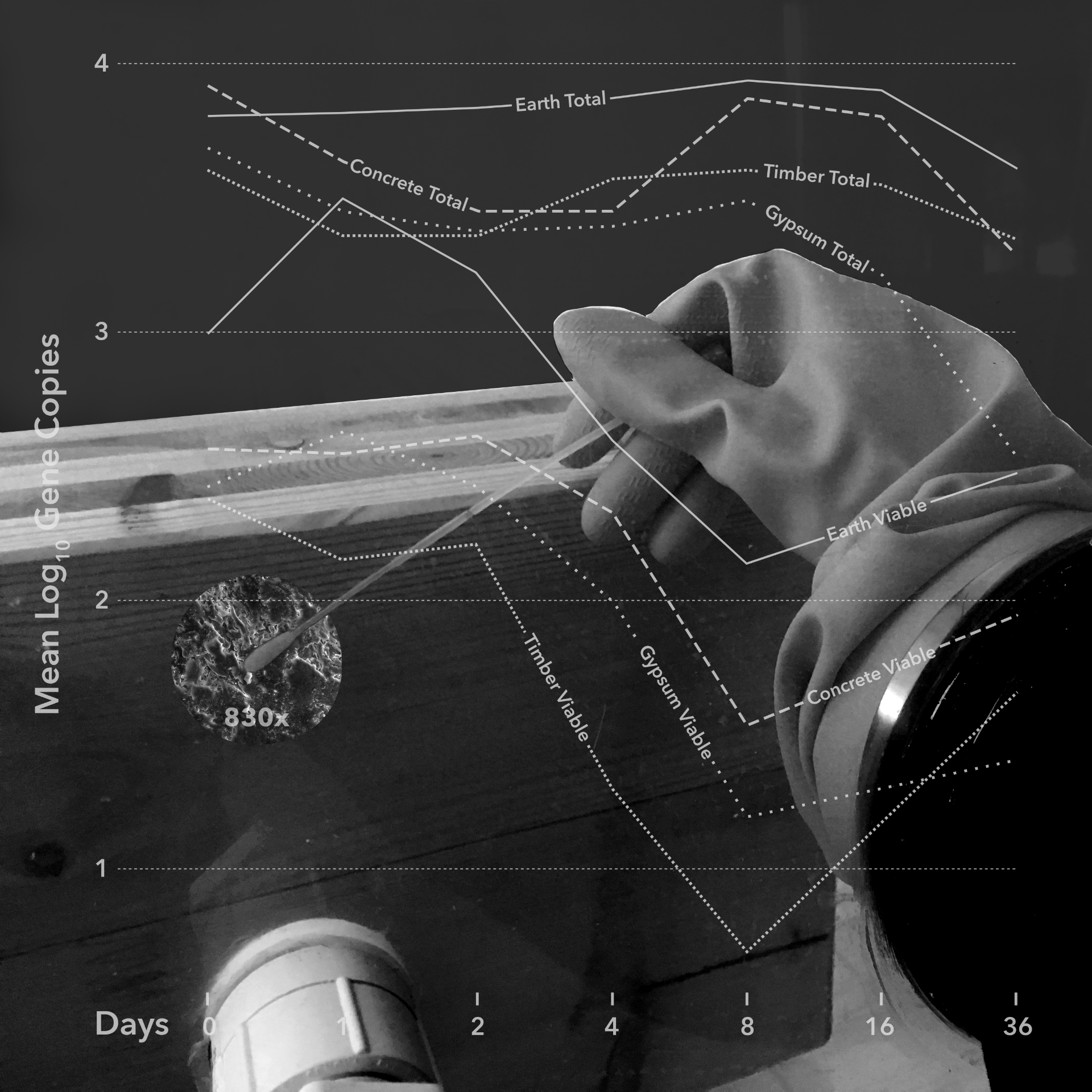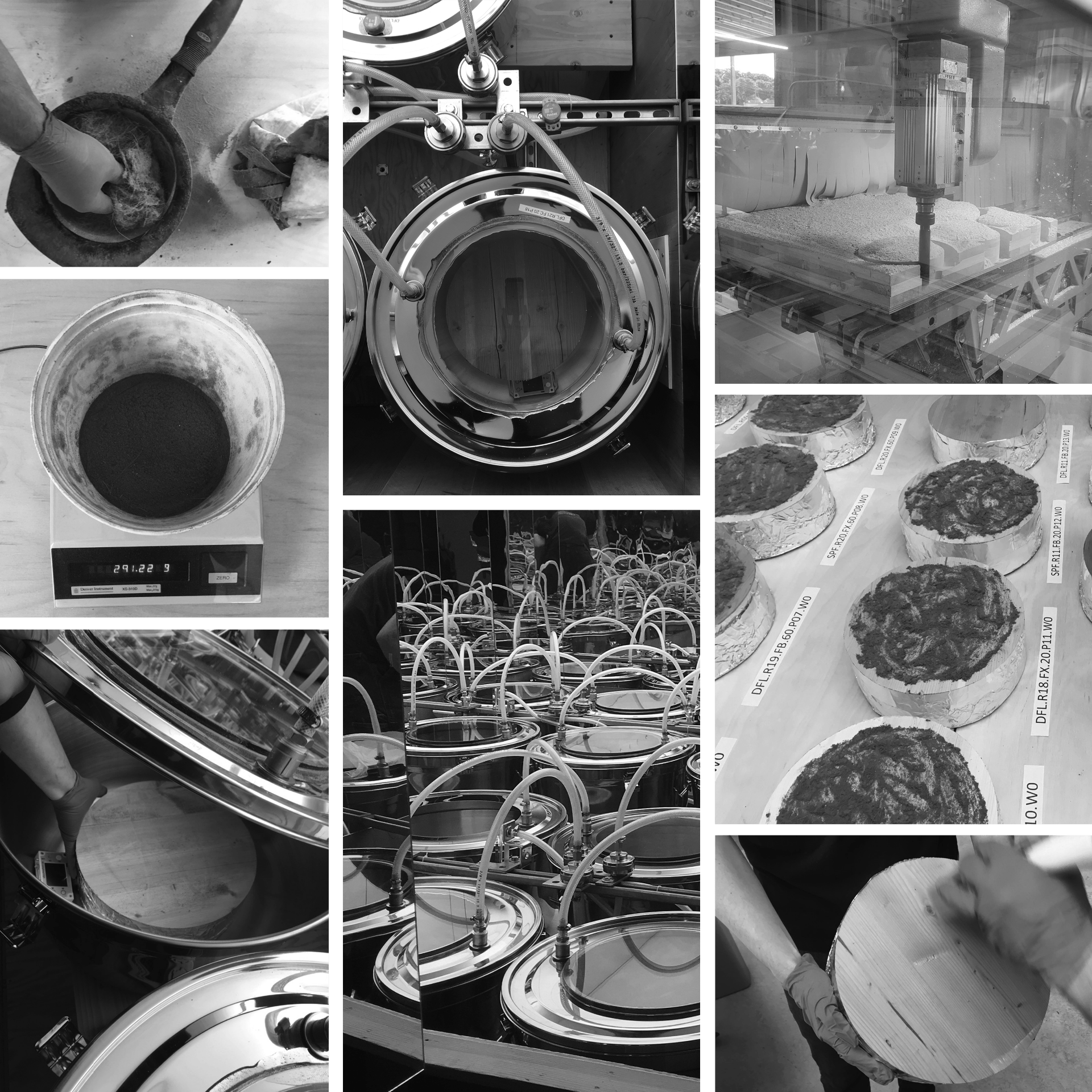02 Materials + Microbes Column
02 Materials + Microbes Column
Does wood species impact our built environment microbiome?
Exposed wood in buildings has a positive emotional impact on occupants; however, it may also have unseen physiological impacts on their health. This may be driven, in part, by the influence of wood to shape a building’s microbiome through selective pressures created by terpenoid emissions, tannins, porosity and moisture buffering. Wood is a porous, natural material that can foster microbes on its surfaces but many of these are sequestered into wood’s pores and difficult to recover; therefore, also more difficult to transfer compared to smooth, non-porous surfaces. Many of these microbes are structurally non-destructive and potentially commensal; that is, microbes with which humans have evolved in nature and may be required to support human health.
These communities found on and in wood materials contribute to the building’s overall microbiome and have a non-visual impact on the wellness of occupants. However, wood sourced for our built environment is obtained from all regions of the planet and the tree species are as diverse as human inhabitants, each expressing differences in surface structure, density, and chemical emission profiles. Thus, the use of natural materials, such as wood, might be an important strategy to reduce the spread of disease indoors by fostering beneficial microbes while also inactivating pathogens (through selective antimicrobial pressures) and supporting human mental health (biophilia) and immunity (humidity buffering).
Building materials have different surface microporosity and emit different VOCs that impact the viability of microbes
Exposure to indoor volatile organic compounds (VOCs) and microorganisms impacts occupant health, yet the role of building materials on these exposures remains poorly understood. Therefore, we placed four different materials (concrete block, mass timber, earthen plaster on strawbale, and painted gypsum board over stick-frame) in individual microcosms to test whether material type influences bacterial community structure and VOC emission.

Synthetic building materials are associated with less diverse microbial communities and antibiotic resistance genes
In general, the built environment is known to host lower microbial diversity and biomass than natural environments, and certain chemicals found in building materials indoors may contribute to this paucity of microbes. One such chemical, Di(2-ethylhexyl)phthalate (DEHP), is a plasticizer used in consumer products and building materials, including polyvinyl chloride flooring material, which adsorbs from material and leaches into soil, water, or dust and becomes an exposure risk to building occupants by inhalation, ingestion, or absorption.
In another study, we looked at concentration of antimicrobial compounds indoors, such as triclosan and parabens, and correlated these concentrations with microbial samples taken from these environments. We found a relationship to increased antibiotic resistance genes in indoor bacteria with increased concentrations of antimicrobial compounds commonly found in synthetic building materials.
(Velazquez et al., 2019, Fahimipour, et al., 2018, Hartmann, et al., 2016)
Do synthetic coatings on natural materials change the structure and diversity of microbial communities found on our building materials?
The addition of moisture-excluding wood coatings alters the surface environment of wood, thus creating a different environment for microorganisms compared to raw unfinished wood. Unfinished wood has been shown to have a greater antimicrobial effect on common human-derived enteric bacteria than plastic or glass surfaces as well as a lower transfer potential of microbes when unfinished, indicating its potential to reduce the transmission and spread of pathogens on surfaces in the built environment versus synthetic materials. Additionally, BioBE research on material surface microbiome composition and associated viability points to surface microbial community differences by material type with wood showing distinction from painted drywall, concrete, and earthen plaster (Mhuireach, et al., 2021).

